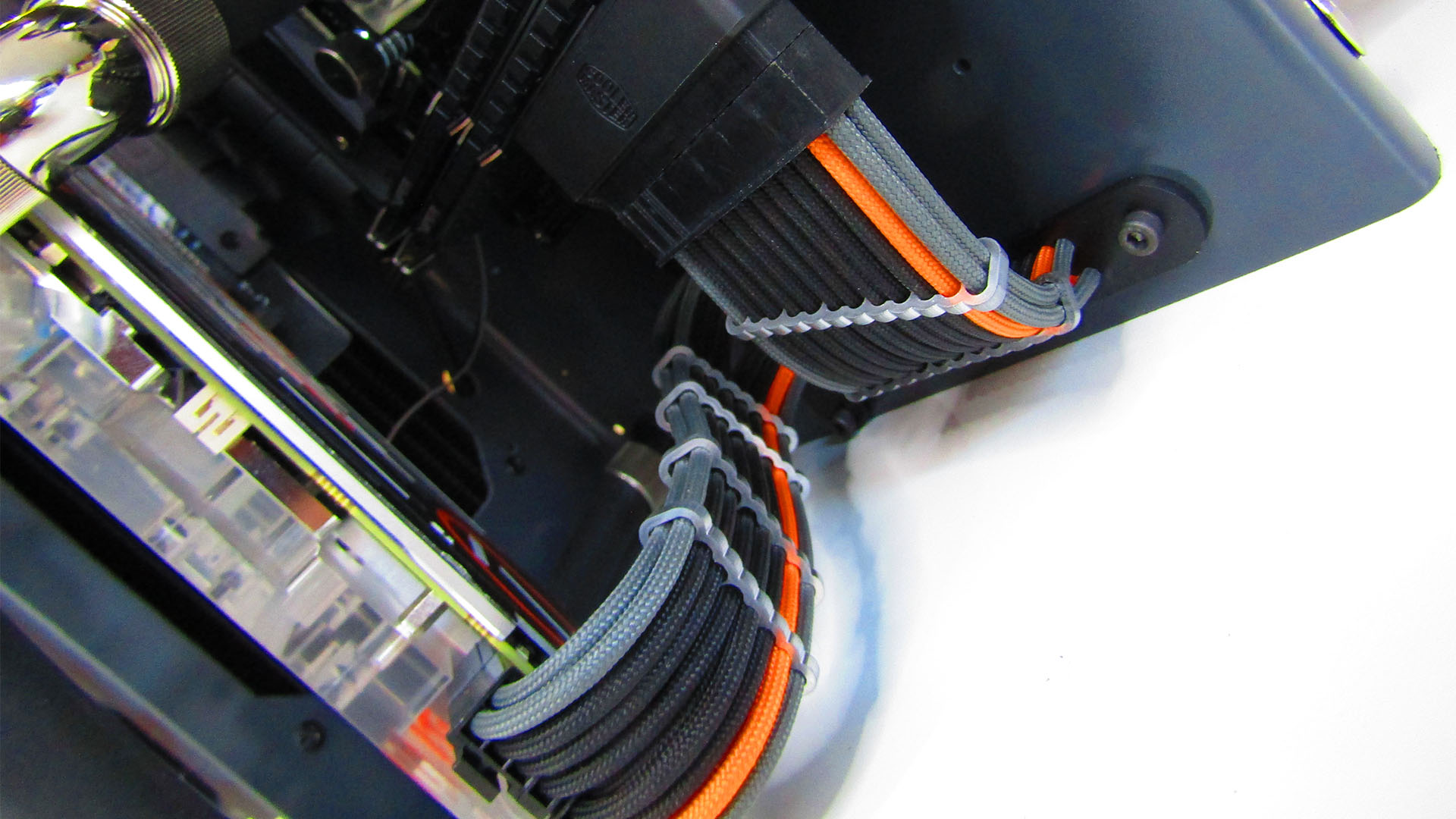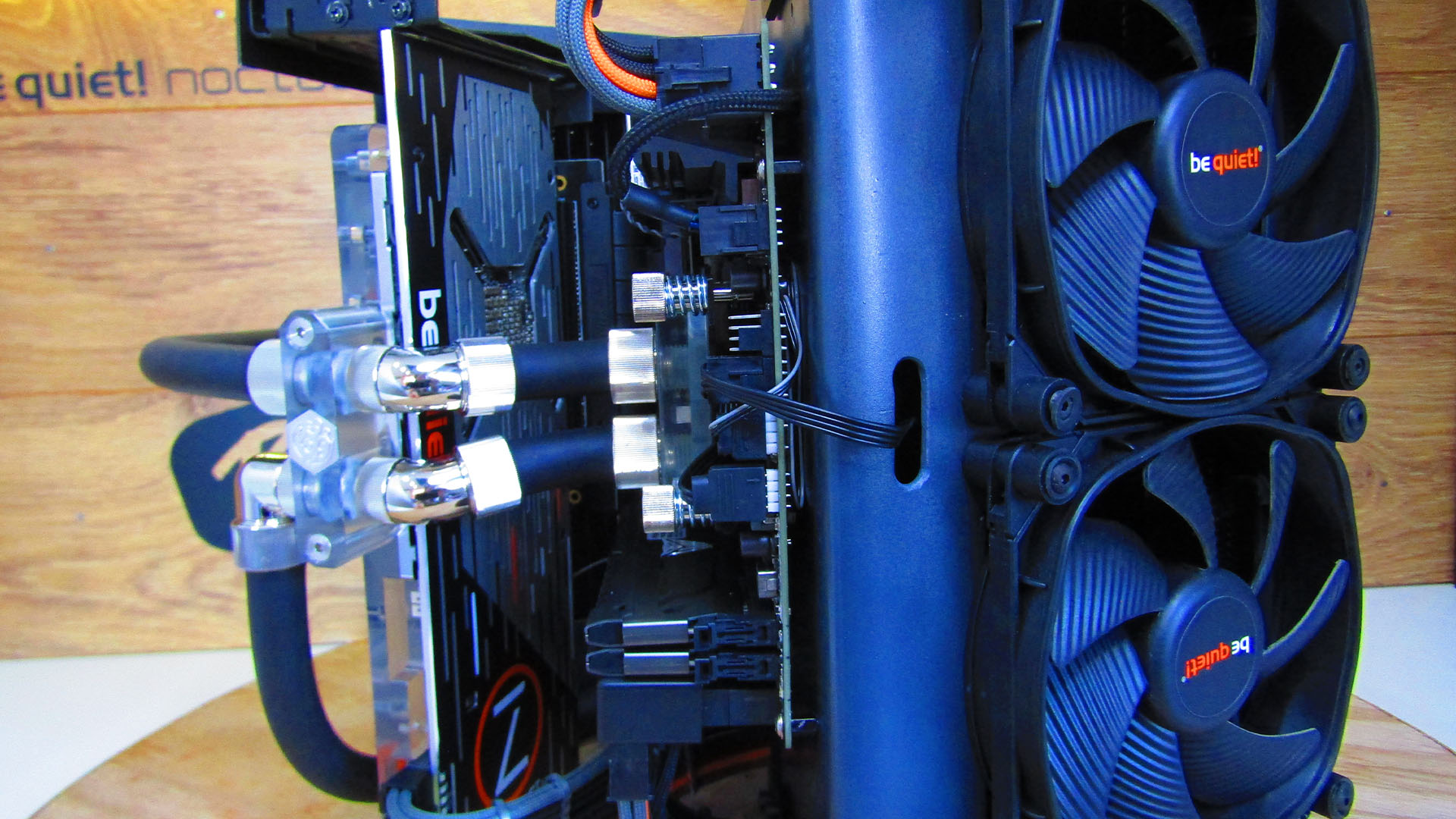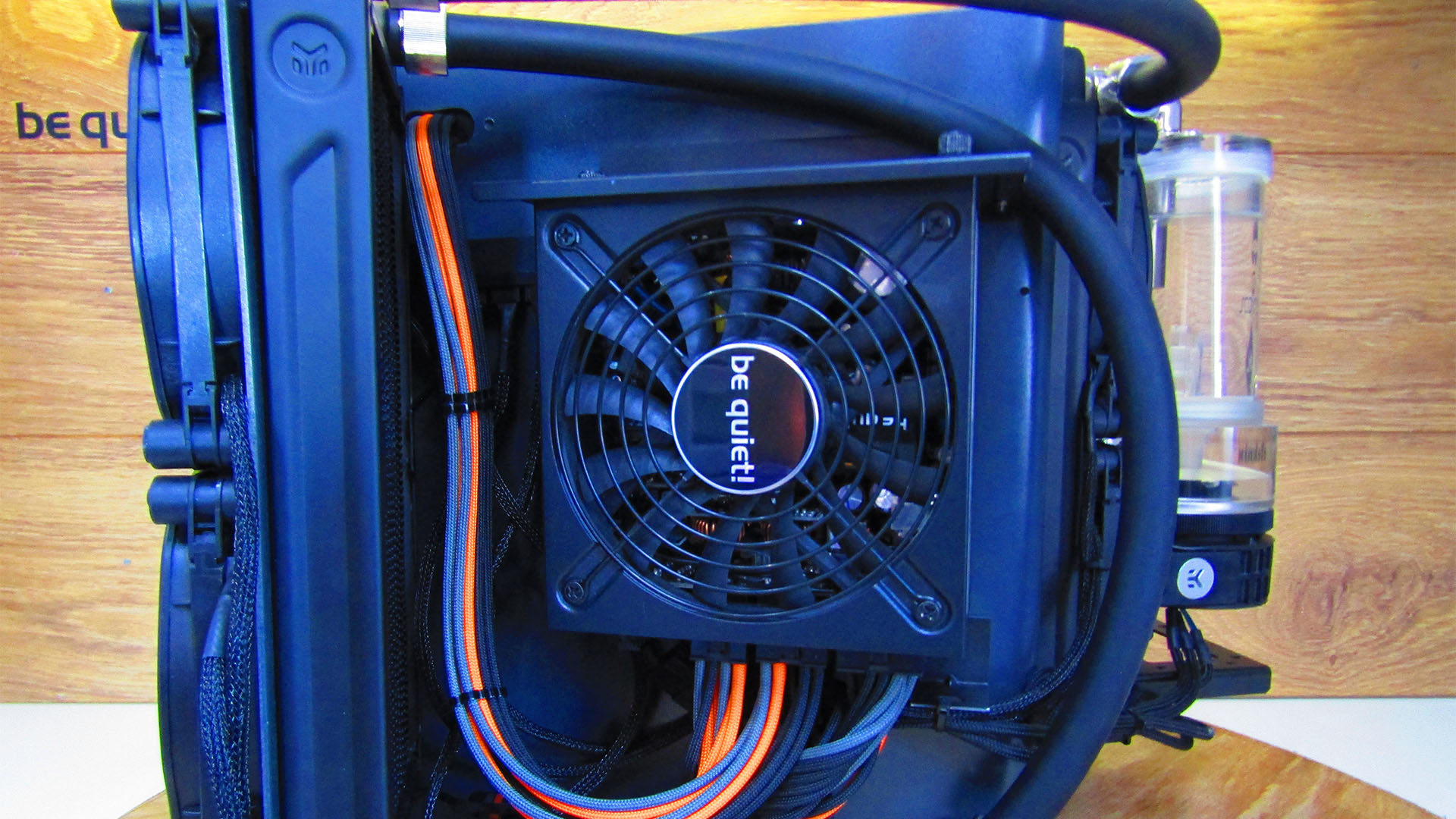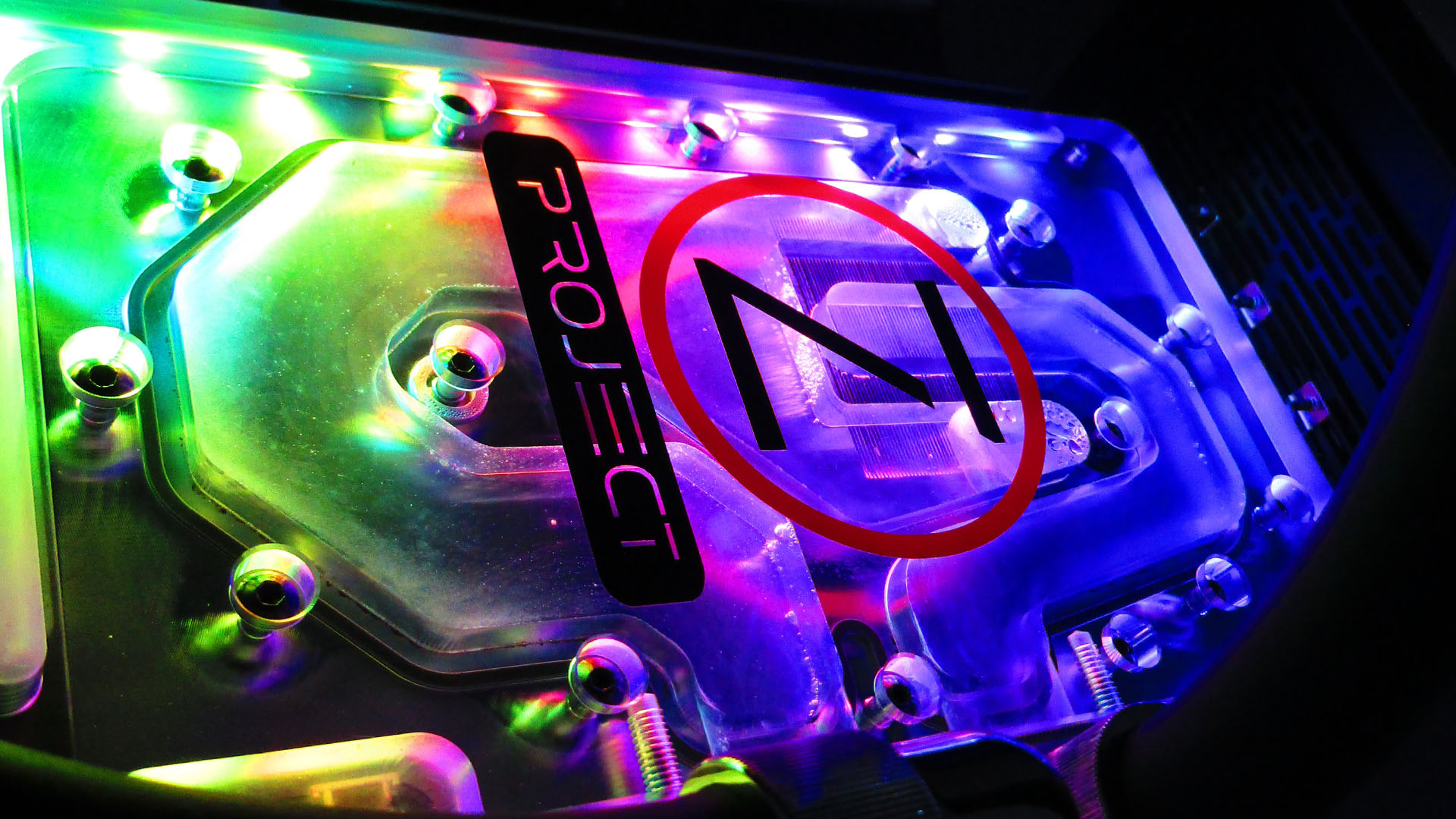We’ve by no means seen a mini-ITX gaming PC fairly like this one earlier than. It contains a {custom} open-air case produced from metal panels that modder Michael Sheppard reduce and bent to form. It additionally contains a full-size AMD gaming GPU and a {custom} water-cooling system.
Because of our quickly rising PC constructing Fb web page, we’ve seen many {custom} gaming PCs, from mods primarily based on current case designs to scratch PC builds. You possibly can even submit yours for consideration proper right here. Now let’s discuss to Michael about how he created this outlandish open-air mini-ITX system.
: What impressed you to construct this mini open-air PC, and what had been your design targets?
Michael: The concept was to create an iteration of my earlier undertaking, Undertaking Z. My foremost purpose was to downsize the footprint utilizing a mini-ITX motherboard and a full-sized ATX energy provide, in addition to making a couple of design enhancements to make it extra user-friendly.
The place did the design course of begin, and the way did you go about planning this construct?
Pen and paper is all the time my first selection when beginning any undertaking – it makes it really easy to shortly design and brainstorm new concepts. Nonetheless, I wish to strive digital drawing and 3D designing just a little extra, as I now have entry to a small CNC machine.
As I had the unique micro-ATX Undertaking Z case at hand, I went straight to marking out areas for varied elements and marking holes for cables straight onto the case utilizing a marker pen – this made it simpler for me to visualise the top end result.
That’s some pretty neat cabling! How did you go about planning the routes for the cables and tubing?
Cables are all the time an vital side for me – they’ll make or break any system. I design and custom-make all my cables, in addition to ones for native modders within the trade – this offers me just a little expertise with what does and doesn’t work inside a system. The cable routes had been dictated by the placement of the motherboard and wherever was handy – I simply went with what made sense.
I additionally CNC-cut some panel-mounted combs – I wished this improve, as within the final construct, I fed the cables by every gap within the chassis. This new means was a lot tidier and gave me the flexibility to take away the cables in a single go for simple upkeep or upgrades.
The runs of water-cooling tubing required a variety of visualizing, planning and sketching. I knew I needed to take the tubing by the case somewhat than round it or excessive, and it made sense to place the radiator on the within, lowering the footprint by 30mm. Ultimately, it made extra sense to make use of a parallel loop, which gave the system a a lot cleaner and tidier look.

How did you get the {custom} emblem design onto the GPU waterblock?
I bought a vinyl cutter final 12 months, which has opened up an entire world in terms of making modifications. I’d spent some huge cash on stencils and stickers for earlier builds, so it made sense to purchase a vinyl cutter, as it will give me a lot freedom with personalizing builds sooner or later.
I went about making a backplate and waterblock decals by firstly taking an image of my graphics card, on this case an AMD Radeon RX Vega 64. I then transferred the images to the software program and cropped it to the precise measurements in bodily kind.
I then just about primarily based my design across the backplate, making an attempt to include an identical look to the Star Wars light-speed stripe. I wished to maintain a factory-made look, as portray this pretty aluminum felt like against the law. I additionally put the Z and be quiet! logos on the highest, and carried on the road and sprint impact all through the design.
Why did you utilize mushy black tubing and clear coolant?
The tubing is 16/10mm ZMT by EK Water Blocks, and that is the primary soft-tubing construct I’ve ever carried out. I selected mushy tubing, because it’s rather a lot simpler to control round bends, which is certainly wanted on a system this form. The coolant was a toss-up between utilizing clear or pastel orange. I went with clear in the long run, as I believed it will look higher with the RGB waterblocks.
Inform us concerning the construct course of.
I went with 2mm-thick metal sheet that I’d recycled from the final (Undertaking Z) construct. Mainly, it concerned me slicing 30% off the highest, slicing off the pre-bent radiator aspect, and bending it to make it shorter. The tip end result made the case 6 x 10 x 12in (W x D x H).
I wished to enhance the placement of the I/O panel by placing it on the highest – within the authentic Undertaking Z, the panel was too near my desk, leading to me having to make use of angled adaptors to plug in a mouse and keyboard.
The second main design enchancment was including holes for fan airflow – within the final construct, the radiators had been mounted on standoffs however they nonetheless didn’t get sufficient air. This entire course of was carried out utilizing an angle grinder, a small slicing disc on a Dremel, hacksaw blades, information and 240-grit sandpaper simply to easy out these traces.

Did you come throughout any difficulties?
The principle concern was that I didn’t fairly have room to mount the graphics card in the best way I initially deliberate, which was with no riser cable and going straight into the PCIe slot. I went by a number of new designs in my head and resorted to slicing down a PCIe riser bracket a number of occasions to achieve its closing kind.
I knew the match was going to be super-tight, so I ordered the smallest riser I may discover, which was a Phanteks 150mm mannequin, after which considered how I used to be going to mount the bracket above the radiator. The concept was to indicate off the backplate and have it parallel with the entrance 240mm radiator, however this location was too tight for the riser cable, so I moved to plan B.
This concerned utilizing 23 x 43mm angled metal – I reduce into the broader aspect at a 45-degree angle and bent within the shorter aspect to sq. up towards it. I then took it to my native storage and put some welds within the be part of so as to add some further energy. After that, it was a case of including the PCIe riser bracket to that.
I believe if the case had been 1in longer then the unique plan would have labored tremendous. Nonetheless, if I had made the case longer, I don’t assume I may have made a parallel loop, which I believe is likely one of the cleanest-looking elements of the ultimate construct.
What number of radiators and followers did you utilize?
There are two 240mm EK Basic SE radiators – one on the within rear and the opposite on the entrance outdoors, loaded with 4 be quiet! Silent Wings 3 followers. Each radiators are positioned on the finish of the loop, pulling air away, though airflow isn’t actually a difficulty with the open-case design anyway.

How are the PSU and reservoir mounted on the primary chassis?
The facility provide is mounted utilizing an ATX-to-SFX bracket, once more connected to a chunk of 23 x 43mm angled metal. The intention was to deal with a normal ATX energy provide measuring as much as 150mm, however with the flexibility to probably go as much as 165mm. The reservoir makes use of the usual EKWB UNI pump bracket for 120mm fan mounts. That’s then mounted to the radiator by the followers, with the vertical D5 pump clamp housing the reservoir.
What are the CPU and GPU temperatures like?
I’ve solely been performing some 2,560 x 1,440 gaming since I accomplished this undertaking, however they’re significantly better because the rebuild from my final mod, thanks to higher airflow and higher paste utility. The utmost temperature of the CPU is 45°C, and the GPU temperature is decrease – it’s usually within the excessive 30s. That is fairly a shock when you think about that the Radeon Vega 64 GPU can pull round 300W – the Bitspower waterblock does a implausible job right here.
How lengthy did the construct course of take?
I began in mid-March and it was accomplished in early April. I did purpose to for it to be began and completed in March, however lockdown and household life brought on a couple of delays.

Are you fully proud of the top end result, or do you would like you’d carried out a few of it in a different way on reflection?
I’m actually over the moon with the top end result. There are some revisions I’d prefer to make, similar to extending the footprint to deal with the radiator on the within and have the graphics card not plugged right into a riser cable.
The concept is to have the ability to make these techniques and fulfill {custom} orders from a single piece of aluminum and embrace {custom} cables. A VRM waterblock would even be a very good addition or a fan over that space for cooling – it does get heat after lengthy classes.
Undertaking Mini Z specs:
- CPU: AMD Ryzen 5 3600
- GPU: AMD Radeon RX Vega 64
- Storage: Essential P1 NVMe 512GB SSD
- Reminiscence: Patriot Viper Metal 3600MHz
- Motherboard: Asus Strix B450i AM4
- PSU: be quiet! SFX-L 600W
- Cooling: EKWB Velocity RGB CPU Block, EKWB Quantum Kinetic D5 Pump and Reservoir, 2 x EKWB 240 SE Basic Radiators, EKWB ZMT 16/10mm tubing, 14 x 16/10mm EKWB silver nickel fittings, 2 x 45-degree rotary silver nickel fittings, 4 x 90-degree rotary silver nickel fittings, Bitspower full-cover nickel/acrylic waterblock for Vega 56/64, 4 x be quiet! Silent Wings 3 followers
This actually is a mini-ITX PC with a distinction, Michael – you’ve thought outdoors the field in additional methods than one and created a extremely highly effective system with a small footprint – good work.
This put up initially appeared on Customized PC, which has been masking superb setups for over 20 years and is now a part of . Be a part of our 500k member Fb group to debate this construct.
In case you think about your self to be an skilled PC builder, you’ll be able to submit your individual {custom} PC construct to us at this time for an opportunity of being featured on sooner or later.

